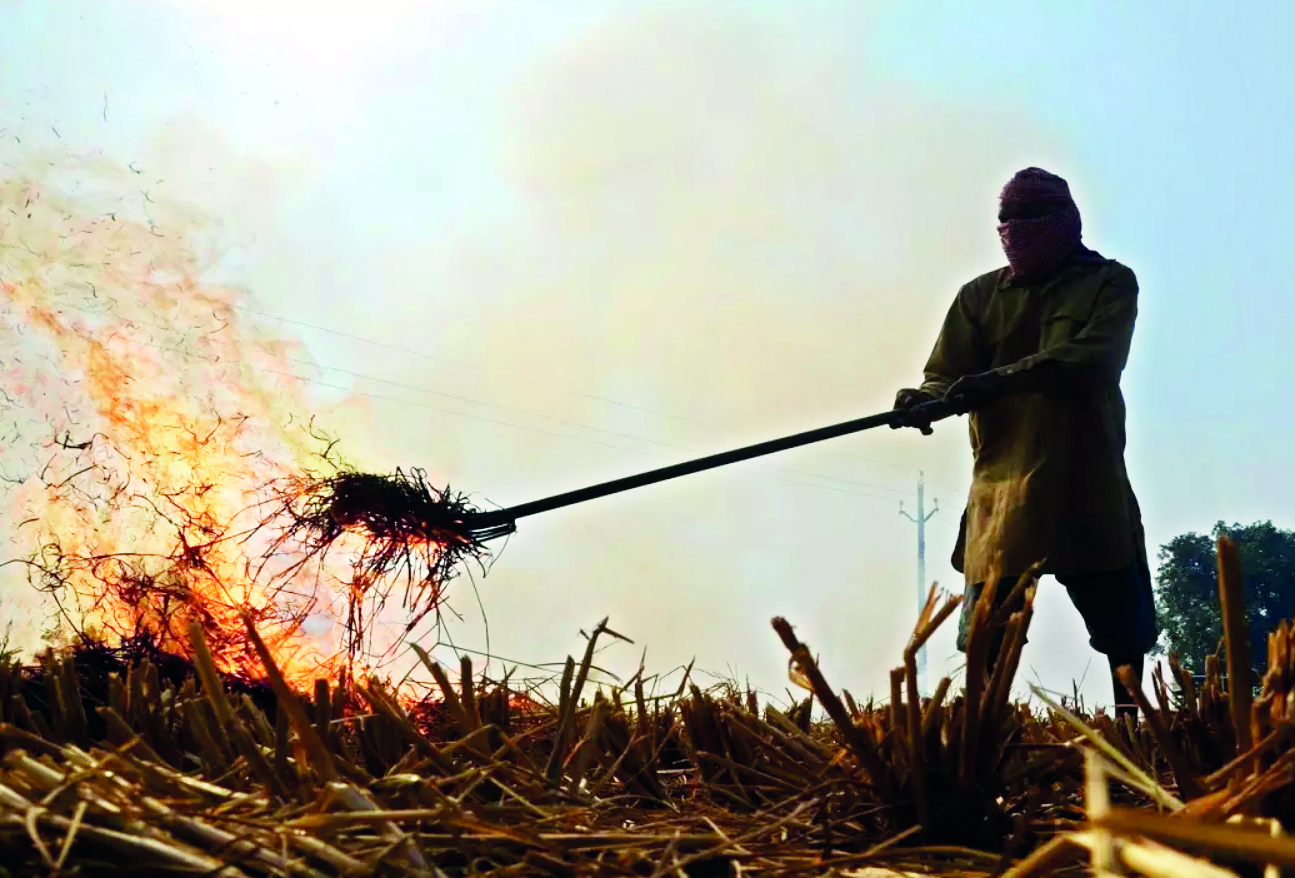From Waste To Wealth
Stubble burning when replaced with high-value applications, creates economic opportunities while addressing environmental challenges through policy support and industry collaboration

Every year, a thick cloud of pollution engulfs cities across North India, with stubble and agricultural residue burning being a leading cause. When not burned, this residue often rots in fields, polluting water sources and becoming a breeding ground for flies and mosquitoes. Instead of treating this residue as waste, India must recognize its immense potential. If properly utilized, agricultural stubble can become a valuable resource—boosting farmer incomes, supporting industries, and solving environmental challenges all at once.
What’ has been done so far?
Both state and central governments have implemented promising initiatives to tackle this problem. These efforts fall into two broad categories: In-Situ Solutions. These focus on using agricultural waste directly in the field, such as by ploughing the stubble back into the soil to enhance fertility. The second is Ex-Situ Solutions. These involve removing the stubble from fields and repurposing it elsewhere. Key ex-situ use cases include burning it for energy generation in coal and steel plants or fermenting it into biogas for cooking and electricity.
A major step in this direction is the government’s mandate requiring coal power plants to co-burn agricultural stubble along with coal. This initiative not only incentivizes farmers to collect and sell their stubble but also reduces coal consumption, helping India cut its reliance on fossil fuel imports. This is an encouraging step that is already showing positive results.
Additionally, governments have subsidized machinery to help farmers collect stubble efficiently. These subsidies range from 50% for individual farmers to as much as 80% for farmer cooperatives, with some pilot programs even providing machines for free to marginalized farmers. These are important steps that have already made a dent in the problem. However, to ensure that all agricultural residue is effectively utilized, we need to build on these initiatives and go further.
The Core Challenge
The biggest hurdle to scaling residue utilization is cost. Collecting, transporting, and processing stubble into energy or biogas is sometimes more expensive than the value of the final product. In cases where costs are low, existing solutions work well. But when costs are too high, more innovative approaches are needed to make agricultural residue processing profitable. The key to overcoming this challenge is innovation—finding high-value applications where the end product is worth more than the cost of collection and processing. The more valuable the final product, the more people will be incentivized to use the residue effectively.
Unlocking the Potential of High-Value Use Cases
In addition to low-value energy applications, India must prioritize technologies that transform agricultural waste into high-value products. If these products command a higher market price, industries will actively seek out stubble, creating a natural demand for its collection and processing.
Examples of High-Value Use Cases include: Biodegradable Plates & Packaging (Using agricultural residues to create eco-friendly alternatives to plastic and Styrofoam), Biochar & High-Quality Fertilizers (Converting residue into soil-enhancing biochar or organic fertilizers), and Cellulose Extraction (Harvesting cellulose from residue for consumer products). Cellulose extraction, in particular, represents a massive untapped opportunity. Currently, India cuts down trees to extract cellulose for making paper, packaging, clothes, diapers, and sanitary pads. Instead, if we extract cellulose from agricultural residues, we not only solve the stubble-burning problem but also reduce deforestation.
To illustrate the economic potential: If one tonne of sugarcane bagasse (a byproduct of sugar production) is used for bio-energy in a power plant, it replaces about 700 kg of coal, worth approximately ₹700. If the same bagasse is processed into cellulose pulp, it yields 150 kg of cellulose, with a market value of ₹13,000 conservatively—an 18x increase in value through technology. This clearly shows that transitioning from low-value burning to high-value material extraction could be a game-changer for the economy and environment.
The Path Forward
The next big opportunity lies in scaling high-value use cases through technological innovation and industrial collaboration. Several companies are already working on breakthroughs in this space, but rapid scaling is needed. If they succeed, Indian farmers, industries, and governments will all benefit. To make this a reality, scientists, entrepreneurs, investors, large industries, and policymakers must come together. The early momentum from government and industry is encouraging. If we get this right, India can transform agricultural residue from an environmental burden into an economic powerhouse—one that enriches farmers, strengthens industries, and clears the air for millions.
The future is bright. But only if we seize it.
The writer is the founder of NanoWeave, a company transforming agricultural residue into sustainable cellulose. Views expressed are personal



